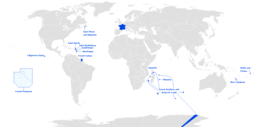
French Guinea was a French colonial possession in West Africa. Its borders, while changed over time, were in 1958 those of the current independent nation of Guinea.

French West Africa was a federation of eight French colonial territories in Africa: Mauritania, Senegal, French Sudan, French Guinea, Ivory Coast, Upper Volta, Dahomey and Niger. The federation existed from 1895 until 1958. Its capital was Saint-Louis, Senegal until 1902, and then Dakar until the federation's collapse in 1960.

Louis Léon César Faidherbe was a French general and colonial administrator. He created the Senegalese Tirailleurs when he was governor of Senegal.

Guinea is a traditional name for the region of the African coast of West Africa which lies along the Gulf of Guinea. It is a naturally moist tropical forest or savanna that stretches along the coast and borders the Sahel belt in the north.

Fouta Djallon is a highland region in the center of Guinea, roughly corresponding with Middle Guinea, in West Africa.
Upper Guinea is a geographical term used in several contexts:
- Upper Guinea is one of the four geographic regions of the Republic of Guinea, being east of Futa Jalon, north of Forest Guinea, and bordering Mali. The population of this region is mainly Malinke.
- In a larger sense, it refers to a large plain covering eastern Guinea, Sierra Leone, Liberia and extending into north western Côte d'Ivoire. Mostly forming the upper watershed of the River Niger, it is sparsely populated and is home to the Haut Niger National Park.
- Upper Guinea can also refer to the interior part of the wider Guinea region, bordering the Sahel. The interior regions are largely defined by the watersheds of rivers that arise from Fouta Djallon, including the Niger, Senegal, Faleme and others. The term was widely applied during the sixteenth to nineteenth centuries to describe a coastal region and its related hinterland with which Europeans traded.
- In biogeography, Upper Guinea refers the region of tropical rainforest extending from southwestern Guinea through Sierra Leone, Liberia, southeastern Guinea, Côte d'Ivoire, and southwestern Ghana. The Dahomey Gap, a drier region of Ghana, Togo, and Benin where the Guinean forest-savanna mosaic extends to the Gulf of Guinea, separates Upper Guinea from the tropical rainforests of Lower Guinea further east. The Upper Guinea forests are also recognized as an endemic bird area.

Boké is the capital city of Boké Prefecture within the Boké Region of Lower Guinea near the border with Guinea-Bissau. It is also a sub-prefecture of Guinea. Located along the Rio Nuñez which flows to its not-too-distant mouth on the Atlantic Ocean, Boké is a port. It is known for the Fortin de Boké museum, formerly a slave fort. The town is served by Boké Baralande Airport. As of 2014 the city and surrounding sub-prefecture had a population of 61,449 people.

The Imamate of Futa Toro (1776-1861) was a West African theocratic state of the Fula-speaking people centered on the middle valley of the Senegal River. The region is known as Futa Toro.

Louis Alexandre Esprit Gaston Brière de l'Isle was a French Army general who achieved distinction firstly as Governor of Senegal (1876–81), and then as general-in-chief of the Tonkin Expeditionary Corps during the Sino-French War.
Ahmadou, was one of the last Almamis of the Fula Imamate of Futa Jallon, in the Futa Jallon region of today's Guinea.

The following outline is provided as an overview of and topical guide to Guinea:
The Jakhanke also spelled Jahanka, Jahanke, Jahanque, Jahonque, Diakkanke, Diakhanga, Diakhango, Dyakanke, Diakhanké, Diakanké, or Diakhankesare are a Manding-speaking ethnic group in the Senegambia region, often classified as a subgroup of the larger Soninke. The Jakhanke have historically constituted a specialized caste of professional Muslim clerics (ulema) and educators. They are centered on one larger group in Guinea, with smaller populations in the eastern region of The Gambia, Senegal, and in Mali near the Guinean border. Although generally considered a branch of the Soninke, also known as Serahule or Serakhulle, their language is closer to Western Manding languages such as Mandinka.
The French conquest of Senegal started in 1659 with the establishment of Saint-Louis, Senegal, followed by the French capture of the island of Gorée from the Dutch in 1677, but would only become a full-scale campaign in the 19th century.

Nunez River or Rio Nuñez (Kakandé) is a river in Guinea with its source in the Futa Jallon highlands. It is also known as the Tinguilinta River, after a village along its upper course.

The Point of Sangomar is a sand spit located on the Atlantic Ocean at the mouth of the Saloum Delta, which marks the end of the Petite Côte west of Senegal.
Bokar Biro Barry was the last independent ruler of the Imamate of Futa Jallon in what is now Guinea. He died in the Battle of Porédaka, when his forces were destroyed by French artillery.

Jean-Baptiste Ernest Noirot was a French comic actor, photographer, explorer and colonial administrator in Senegal and French Guinea in West Africa. He became involved in scandal and was suspended in 1905 when two of his protégés were accused of extortion and other abuses of power, but later he was reinstated.

Jean-Marie Bayol was a French army doctor, colonial administrator and politician.

Kapitaï and Koba were two areas on the coast of West Africa which were the object of German colonial initiatives in 1884 and 1885. They lay between the Pongo and Dubréka rivers, south of Senegal and Gambia in modern Guinea; in the terms commonly used in the 19th century they were considered part of Senegambia. The short-lived German colony there was known as the Dembiah colony or Colinsland.














